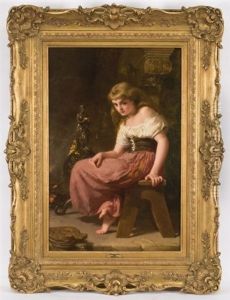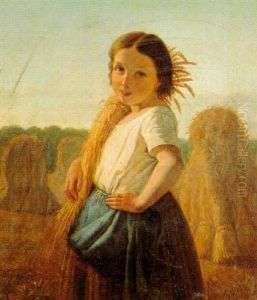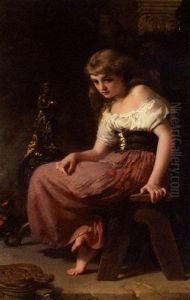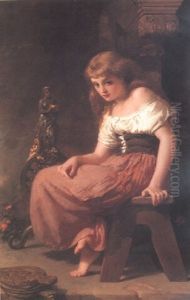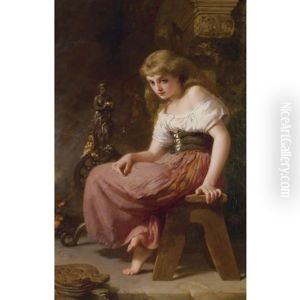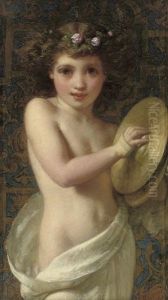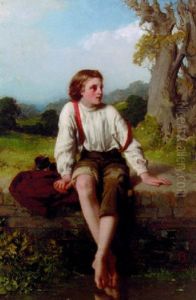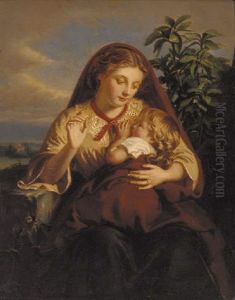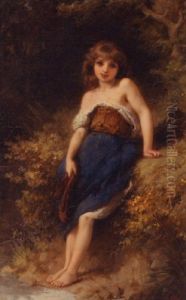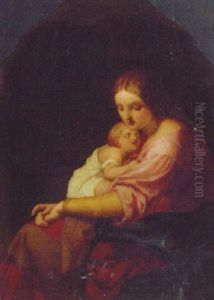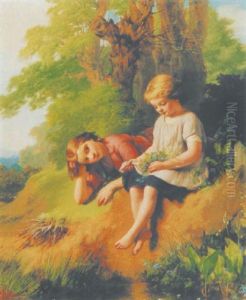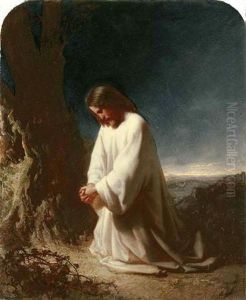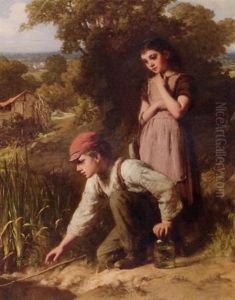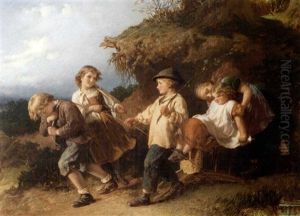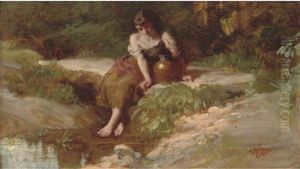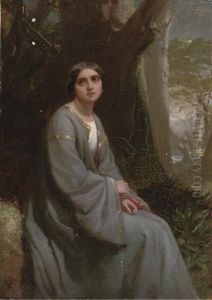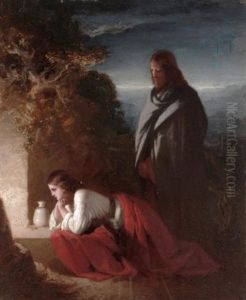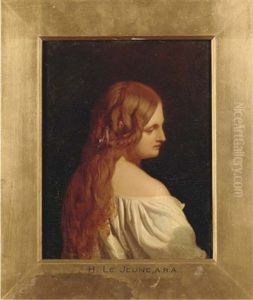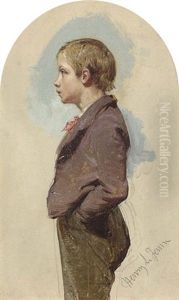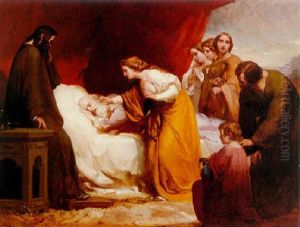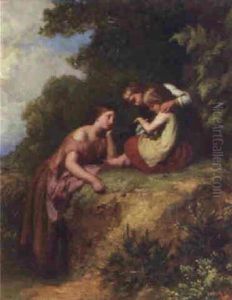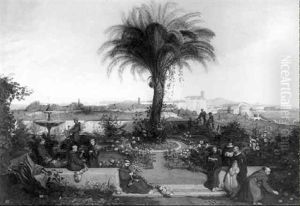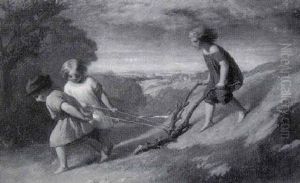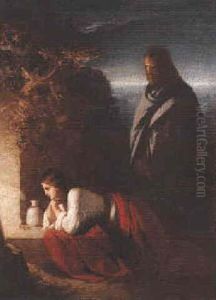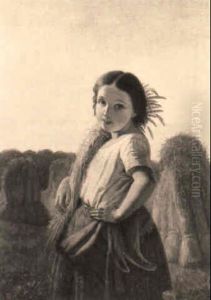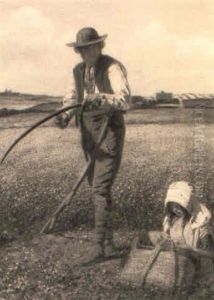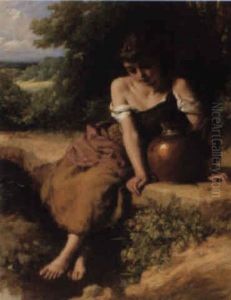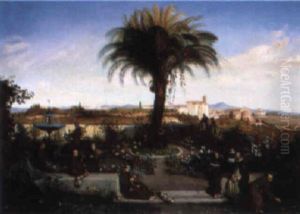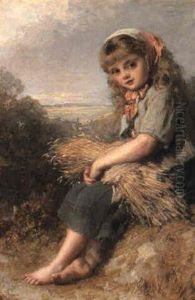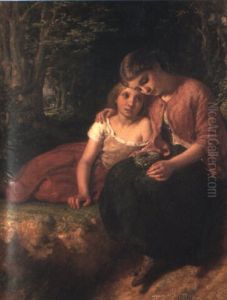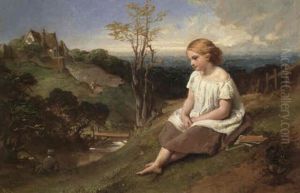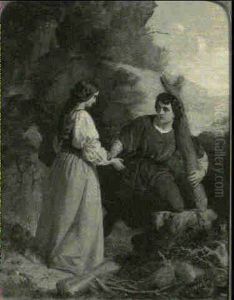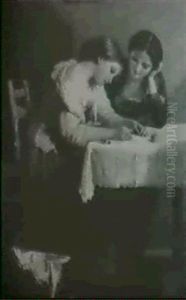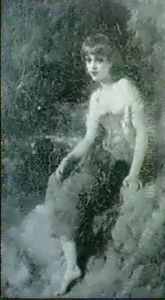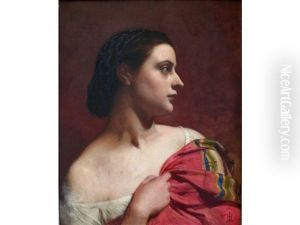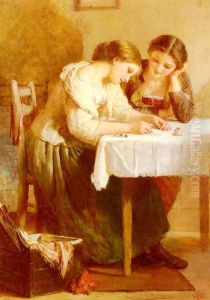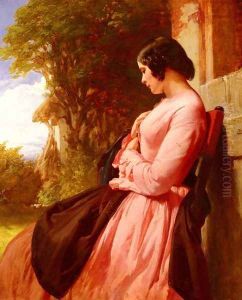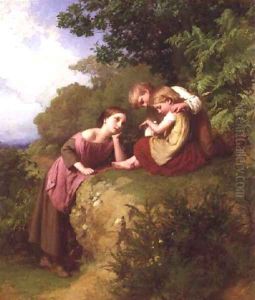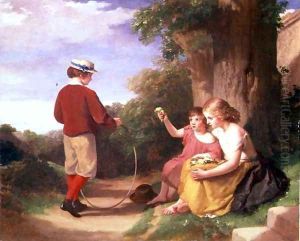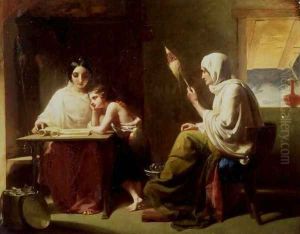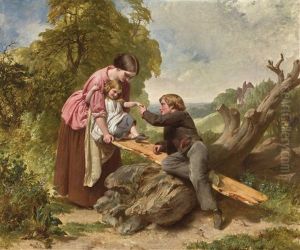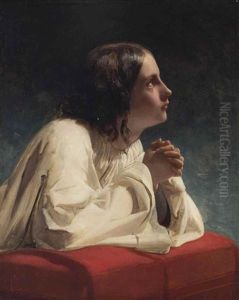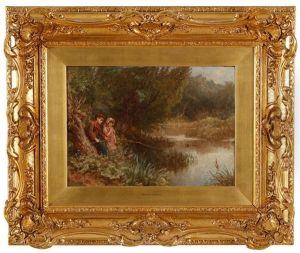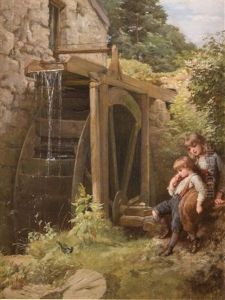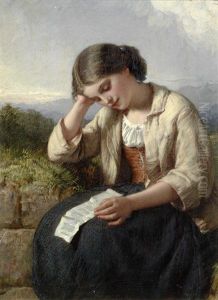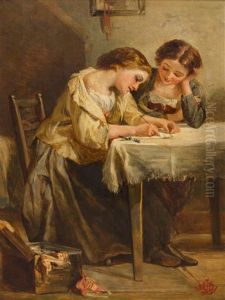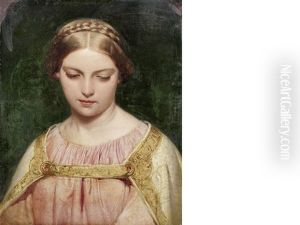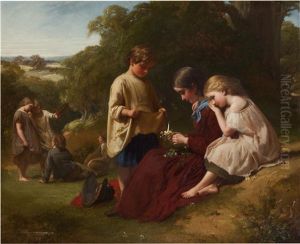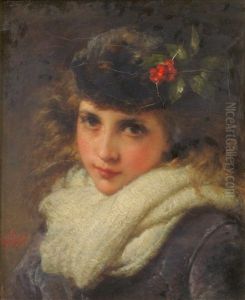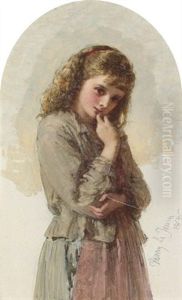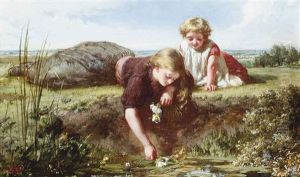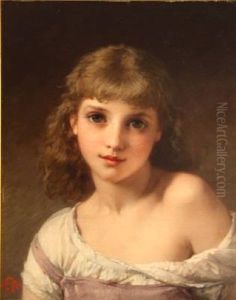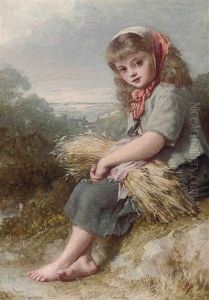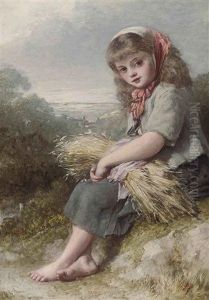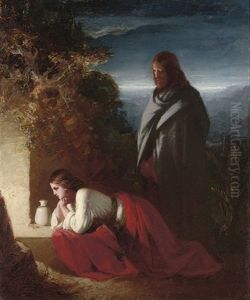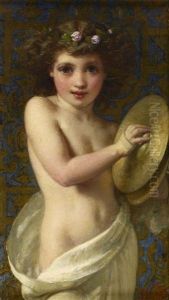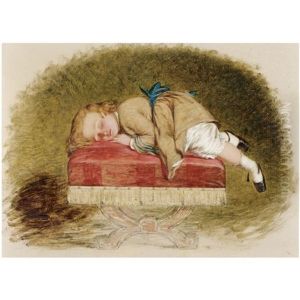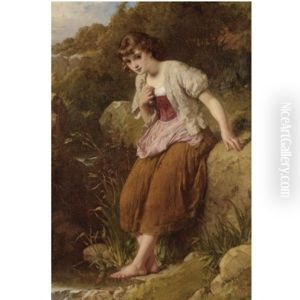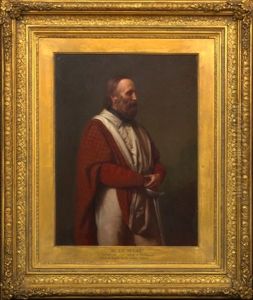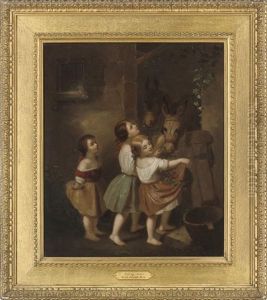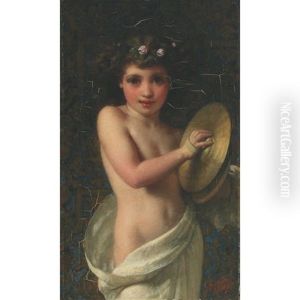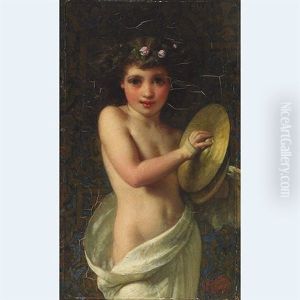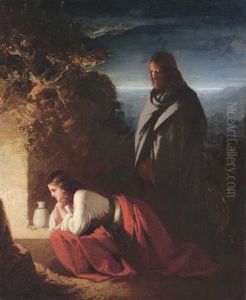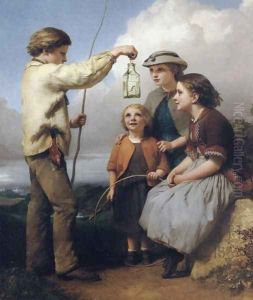Henry Lejeune Paintings
Henry Lejeune, also known as Henry John Léjeune, was a notable English painter, teacher, and Royal Academician. Born on January 12, 1819, in London, England, Lejeune was recognized for his genre paintings, historical scenes, and portraits. He displayed a prodigious talent for art from a young age, which led him to pursue a formal education in the field.
Lejeune trained at the Royal Academy Schools after initially being taught by his father, who was also an artist. His education under the auspices of the Academy played a significant role in shaping his artistic style and proficiency. He began exhibiting his work at the Royal Academy when he was only 17 years old, quickly gaining recognition for his abilities. Throughout his career, Lejeune painted in a style that was influenced by the prevailing Victorian taste, often depicting sentimental scenes of family life, children, and pastoral landscapes.
In 1842, Henry Lejeune was awarded a silver medal for a drawing from life, and by 1863 he became an Associate of the Royal Academy (ARA), a prestigious recognition of his contributions to the art world. Later, in 1874, he was elevated to the status of a full Royal Academician (RA). In addition to his painting career, Lejeune was also a dedicated teacher. He served as the Headmaster of the Addiscombe Military Seminary, where he instructed cadets in drawing, an essential skill for military officers at the time.
His works were widely appreciated for their attention to detail, use of color, and narrative quality. They often reflected the Victorian values and interests of his day. Lejeune continued to paint and exhibit his works until his later years, contributing to the British art scene and influencing a number of younger artists.
Henry Lejeune passed away on April 5, 1904, leaving behind a legacy of Victorian genre painting that continues to be studied and appreciated for its historical and cultural significance. His works are part of various collections, including those of museums and galleries, and they serve as a testament to the artistic movements and sensibilities of the 19th century.
